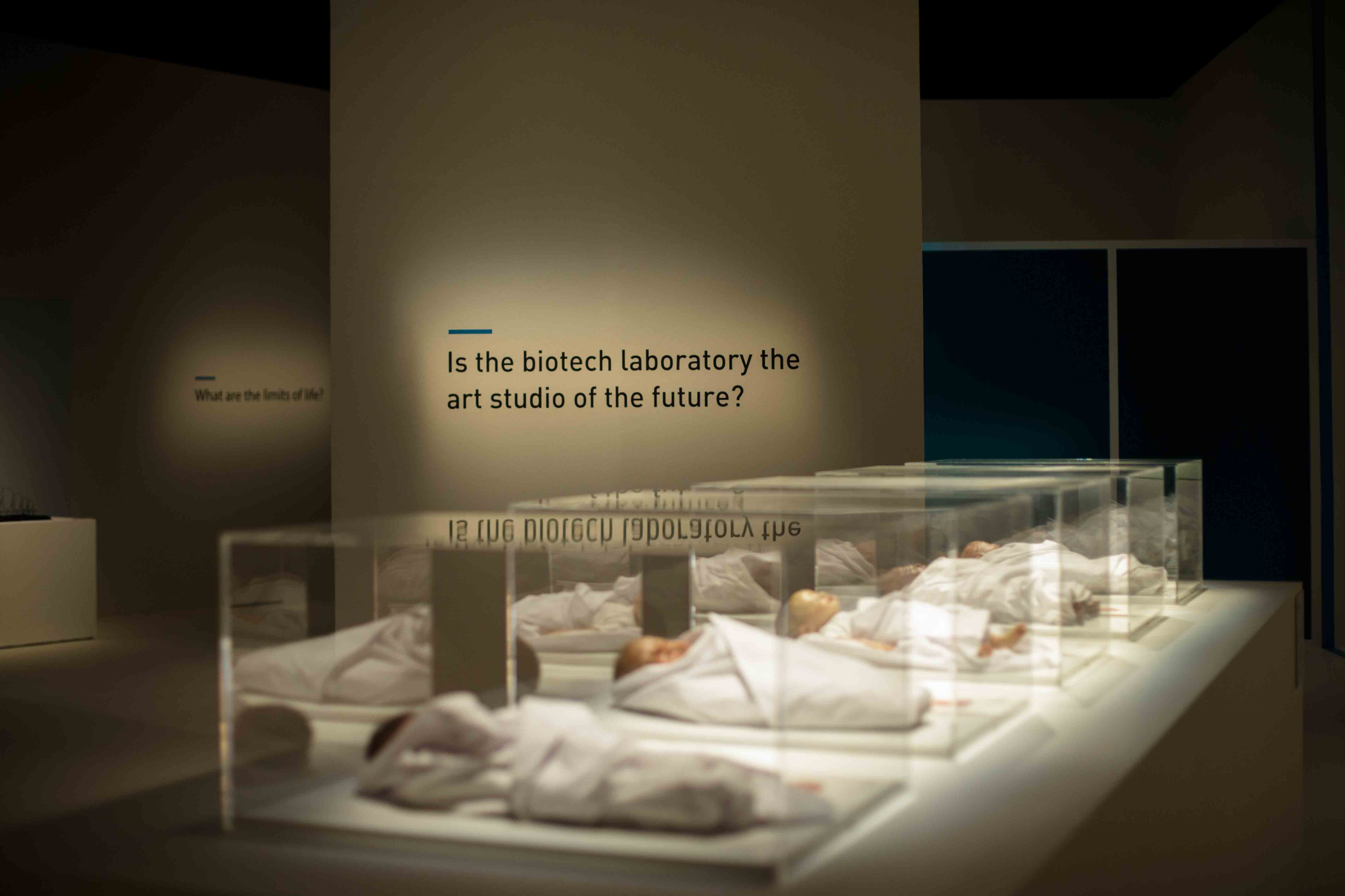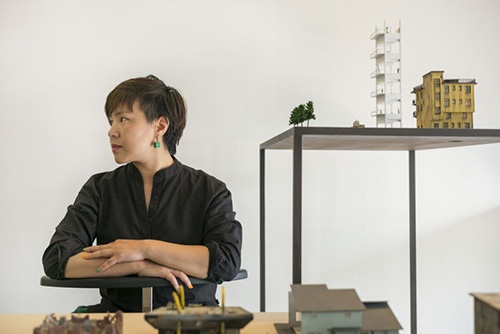Disclaimer: I am usually not a big fan of works that are speculative of technological advancements. Thus, the works I will touch on are more “traditional” in terms of subject matters.
Firstly, I actually really enjoyed the use of space of the entire show.

Installation view of “Transfigurations” by Agatha Haines (Photo credits: Agatha Haines)
The whole show was divided into four sections and thought-provoking quotes like those in the picture above are littered around the space. The different takes on how technological and life sciences are seeing their distinction being blurred are juxtaposed with quotes on the issues of bioethics. Hence, I feel that the show was one that questions and examines our definition of humanity more than one that merely surveys scientific advancements.
My favourite work was a video piece by Chinese artist Cao Fei– Whose Utopia?.

Cao Fei (Photo credits: Zhang Zhi)
This three-part video is a product of the artist’s half-a-year residency at the Osram light-bulb factory in Foshan. Cao conducted workshops for the factory workers, many who are young emigrants from the inland provinces of China.
I was really taken in by the ingenuity of juxtaposing different forms of human expressions with the setting of the factory. Cao marries the mundane and ritualistic process of factory work with the fragility and preciousness of an individual’s dreams and aspirations. The use of dance and music becomes almost a form of serenade for the everyday, faceless factories workers. The tension of an individual and mass systems (conforming) has always been a subject matter within creative works.
Charlie Chaplin’s Factory Work in Modern Times
The different worker’s mode of expressions and the use of moving shots give irony towards the factory setting that is fixed and generic. She presents the people as fluid and living, almost as a feminine element. Whereas the factory space is rendered in a slightly greener lighting, denying viewers the comfort of a familiar and naturalistic imagery despite the artfully executed cinematography. The never-ending factory lines, the mammoth scale of capitalistic production becomes almost monolithic and a masculine element. Cao highlights this tension within our society, at once honouring human creativity and resilience of the human spirit while also challenging the systems of productions and economics.
Still from Cao Fei’s “Whose Utopia?” (translates to “my future is not a dream”)
Whose utopia is it when everyone is forced to put aside their own dreams and aspirations? Whose utopia is it when machines are replacing humans and leaving us with less options?
I also really enjoyed Liam Young’s work New City: Machines of Post Human Production. I really enjoyed the projection of different city skylines being stitched together. I also found it very clever for Young to use a projector rather than a screen or lightbox. This denies viewers a chance to closely inspect the landscape he has composed– which pokes fun at how the cosmopolitan landscape is one that is not foreign but also not close to heart.
This display is placed directly across and in conversation with a video loop of a factory production line. The austerity of a factory setting, how clean, angular and bright it is juxtaposes the sepia-looking and cluttered appearance of the city skyline.
Overall I really enjoyed the whole work. The only regret was the series of machinery mock-ups that were placed in between the two projections.

I felt that this disrupted the dynamics between the two screens. It would have been preferable if the space between was left empty such that viewers can be engulfed entirely by the two large projections. And the mock-ups would have been nicer if they were placed against the wall outside the room where the projections were so they can act as a prelude to the experience.
All in all, the outing was really fun and I hope to have more of these outings! 🙂


